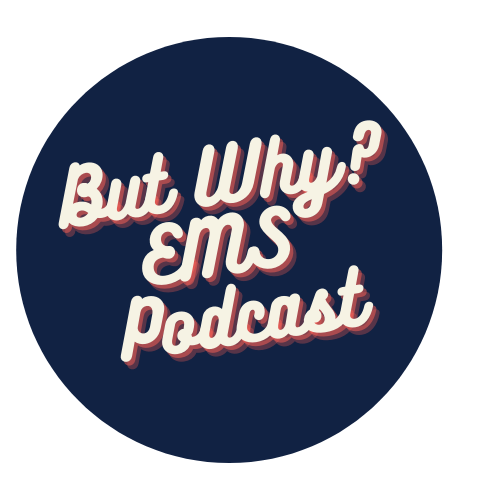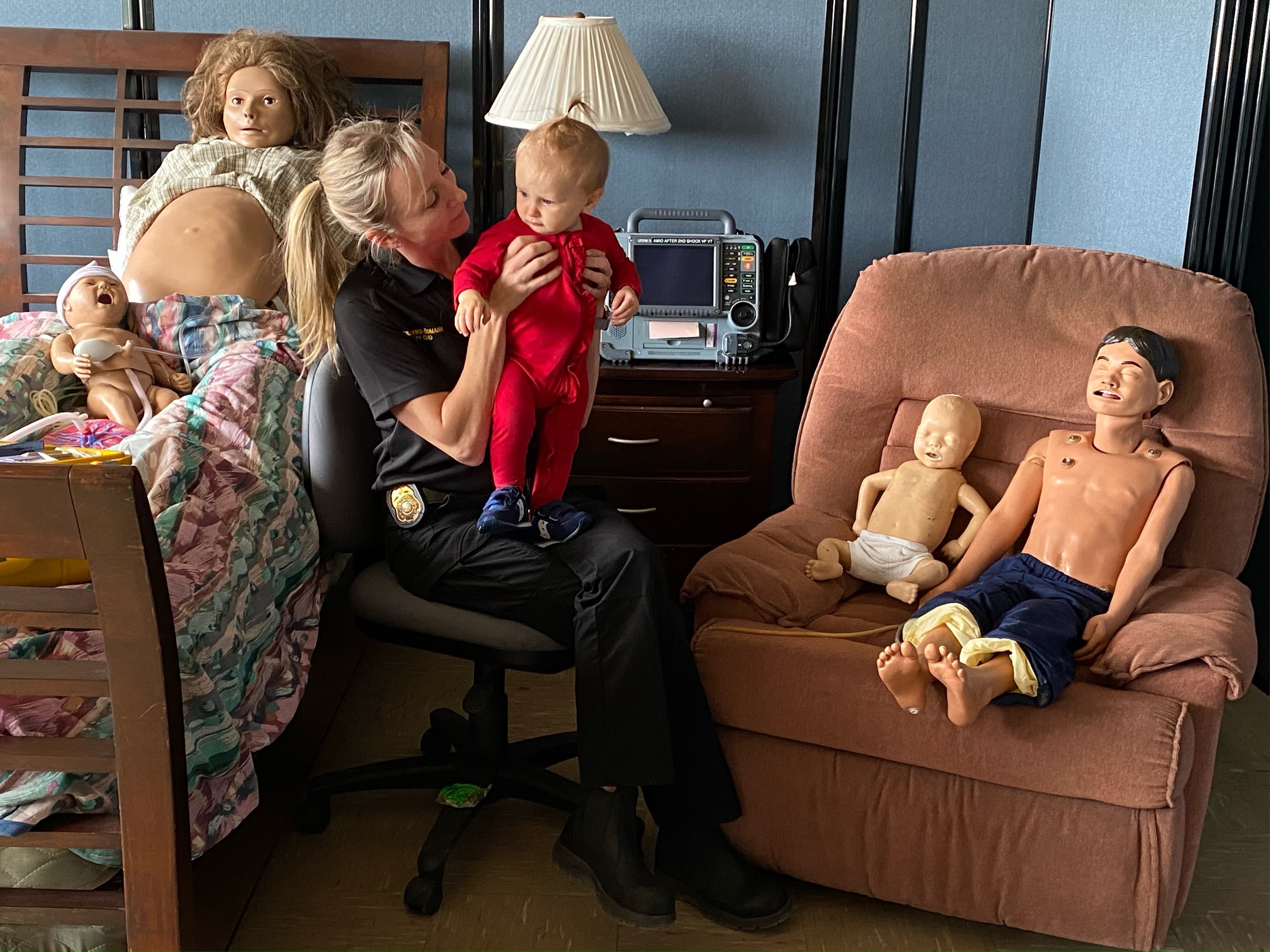Ep. 22: Ouch-less Pediatrics
Safely and effectively managing pain in our pediatric patients is a primary responsibility for our EMS clinicians. Medical directors must be able to identify gaps in pediatric pain management and provide the necessary QA/QI to close those gaps. In this episode we focus on exactly that, with several experts in EMS joining us to offer their knowledge and critical appraisal of the evidence in order to identify and close the gaps in the management of pain in children.
Learn more about the Emergency Medical Services for Children Innovation and Improvement Center
Email km@emscimprovement.center
Follow on Twitter @EMSCImprovement
For CAPCE credits click here
Take Home Points
Medical Directors must utilize QA/QI to improve management of pediatric pain within their EMS systems.
Protocols for managing pediatric pain should mirror the most current evidence.
Medical directors should utilize the guidelines of their local tertiary pediatric medical center if available.
The NASEMSO Model Guidelines are also a great option to help guide protocol development.
We also recommend utilizing the EIIC Pain management resources available which offer educational resources, tools, and recommendations for improving pediatric pain management.
Literature Review Recap
Analgesia Use in Children with Acute Long Bone Fractures in the Pediatric Emergency Department.
Published in The Journal of Emergency Medicine in 2020
Where: Assessment of the management of pediatric pain in a tertiary children’s hospital emergency department in the setting of long bone fractures.
What: Retrospective single center study
Who: Age 18yo and younger with ED diagnosis of long bone fracture, 2005-2016
905 patients included
63% male
48% African American
Median age 6yo
72% fracture in upper arm, 77% sent home
Outcome:
28% received no pain medication
Median time to document a pain score was 6 minutes
Pain medication order time was 63 minutes
87 minutes to time of administration of pain medications
Factors related to undertreatment
African American children
Public insurance
Single fracture
POV arrival to ED
Factors related to faster treatment
Arriving when ED is busier
Private insurance
Lower extremity fracture
EMS arrival to ED
Implications: Even in the ED, we don’t do a very good job of quickly treating pain or even treating it at all.
Consider: Standing orders for managing pain in certain situations such as long bone fractures.
Prehospital Pain Management: Disparity By Age and Race
Published in Prehospital Emergency Care in 2018
Where: Research data set
What: Retrospective descriptive study from 2012-2014
Who: Patients <18yo captured in the database
Outcome:
> 69 million EMS activations, 276,925 were for patients transported with primary impression of fracture, burn or penetrating injury.
6% of EMS activations with these potentially painful medical impressions received any pain meds and this was lowest in amongst infants and toddlers where it was only 6.4%.
The most administered meds were Morphine and fentanyl. < 7% of children age < 11 received either med.
Only 29.5% had pain documented as a symptom
Significantly lower amongst infants and toddlers at 14.6%.
When pain was documented as a symptom, only 19.9% received pain medication (only 68% of infants and toddlers vs. 26.4% of children aged 11-14)
To examine racial disparities, patients were grouped by age < 15 and > 15yrs of age.
Administration of pain medications varied significantly amongst racial groups.
Black patients were the least likely to be administered pain mediation (8.7%) while white patients were the most like (22.4%). This disparity held for both age groups.
Implications: There are likely biases and disparities in the management of pain prehospital both by age and race.
Consider: Establishing protocols for pain management especially in our youngest patients. QA and QI focused on bias in prehospital medicine is critical for medical directors.
Multicenter Evaluation of Prehospital Opioid Pain Management in Injured Children
Published in Prehospital Emergency Care in 2016
Objective: Assess the change in frequency of pain documentation and the change in frequency of opioid administration in kids with injuries after applying evidence-based guidelines
Where: 3 separate EMS agencies, part of CHAMP research node of PECARN
Who: <18yo prehospital patients with blunt, penetrating, laceration, and/or burn trauma
What: Updated pain protocols and implemented mandatory CE
Outcome:
No improvement after implementation of evidence-based guidelines for managing pain
3600 pre and 3700 post intervention
Opioid administration pre/post remained 5% (15% if moderate to severe pain score 4 or higher)
18% had pain score documented pre/post (75% moderate to severe pain)
Only one agency gave intranasal opioids despite all three agencies having the capability
No implementation of QI protocol along with these changes
Implications: Implementation of protocol changes alone does not translate to clinical practice change. If you make changes “you really have to own it”
Consider: Adding Quality improvement projects may improve adherence to protocol changes. Robust QA/QI is a must for any medical director. Be sure to measure interventions over time before deciding if they worked or not. Consider an EMR prompt.
Evidence-Based Guidelines for Prehospital Pain Management: Recommendations
Published in Prehospital Emergency Care in 2021
Objective: Provide evidence-based guidelines for the management of pain prehospital in adults and pediatrics
What: RECENT Systematic review of the comparative effectiveness of analgesics in the prehospital setting prepared by the University of Connecticut Evidence-Based Practice Center for the Agency for Healthcare Research and Quality (AHRQ) with funding by NIHTSA.
(Mostly) Pediatric-focused Recommendations
Intranasal fentanyl is preferred over IM/IV fentanyl for prehospital pain management in pediatrics. Don’t delay for IV access
IV acetaminophen is preferred over IV opioids for the management of moderate to severe pain IF it is available
IV NSAIDs or IV opioids is appropriate for initial prehospital pain management
IV NSAIDS are preferred over IV acetaminophen, also consider PO for both
IV ketamine or IV NSAIDs for initial pain management prehospital is appropriate
IV ketamine or IV opioids for initial pain management prehospital is appropriate
If IV opioids are selected for prehospital pain management, Morphine or fentanyl are preferred
Avoid mixing opioids and ketamine IV
Implications: Follow evidence-based guidelines when developing your pediatric pain management protocols
Don’t forget intranasal options and be careful when mixing IV ketamine and IV opioids
If administering sedating medication to pediatric patients, ALWAYS use ETCO2.
Sources
International Association for the Society of Pain Subcommittee on Taxonomy
WT Zempsky NL Schechter 2003 What’s new in the management of pain in children Pediatrics Rev 24 10 337 347 16
SJ Weisman B Bernstein NL Schechter 1998 Consequences of inadequate analgesia during painful procedures in children Arch Pediatrics Adolescent Med 152 2 147 149 17
JT Pate 1996 Childhood medical experience and temperament as predictors of adult fu
Educational Module on Prehospital Pain Management in Children (Targeted Issues Grant): http://www.youtube.com/watch?v=Tn3MF_4-9iQ&feature=youtu.be
Lorin R. Browne, Manish I. Shah, Jonathan R. Studnek, Daniel G. Ostermayer, Stacy Reynolds, Clare E. Guse, David C. Brousseau & E. Brooke Lerner (2016) Multicenter Evaluation of Prehospital Opioid Pain Management in Injured Children, Prehospital Emergency Care, 20:6, 759-767, DOI: 10.1080/10903127.2016.1194931
Disclaimer
The Emergency Medical Services for Children Innovation and Improvement Center is supported by the Health Resources and Services Administration (HRSA) of the U.S. Department of Health and Human Services (HHS) as part of an award (U07MC37471) totaling $3M with 0 percent financed with nongovernmental sources. The contents are those of the author(s) and do not necessarily represent the official views of, nor an endorsement, by HRSA, HHS, or the U.S. Government. For more information, please visit HRSA.gov.



